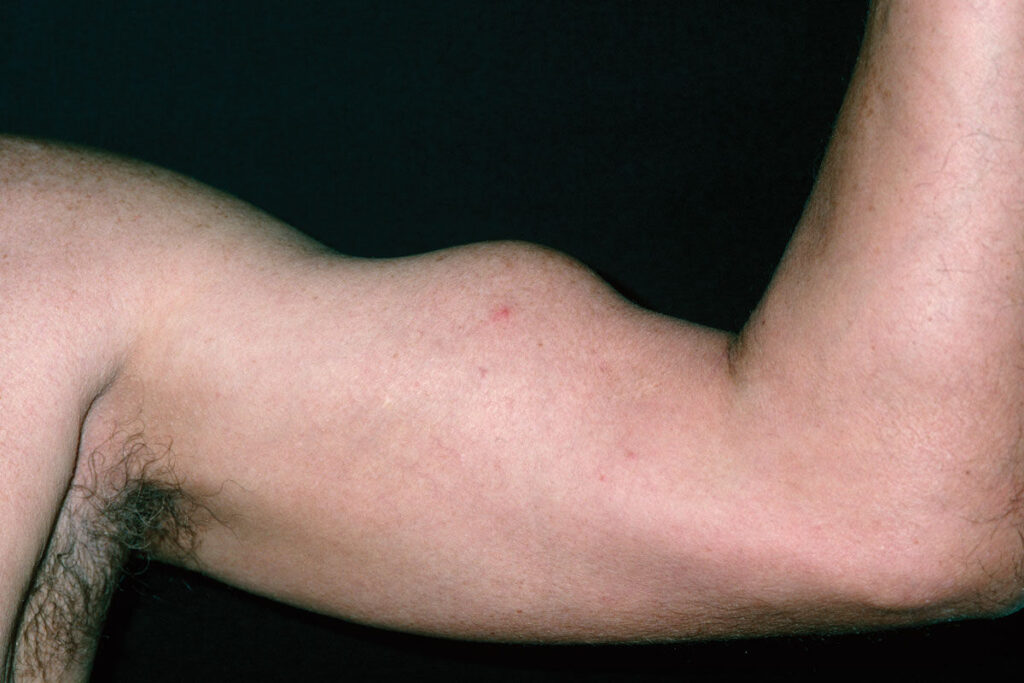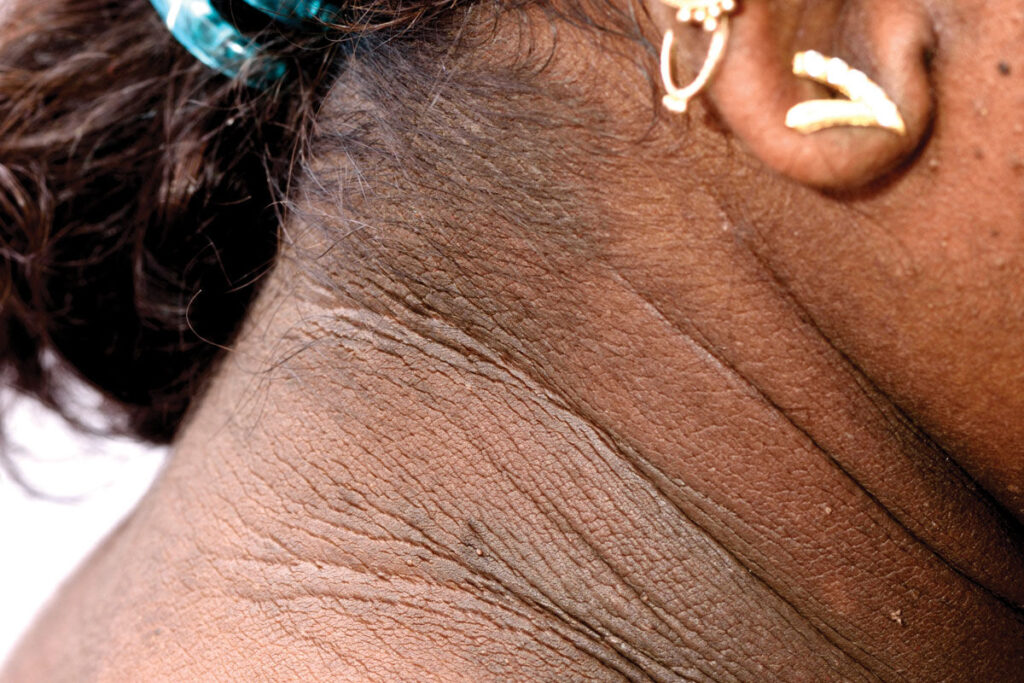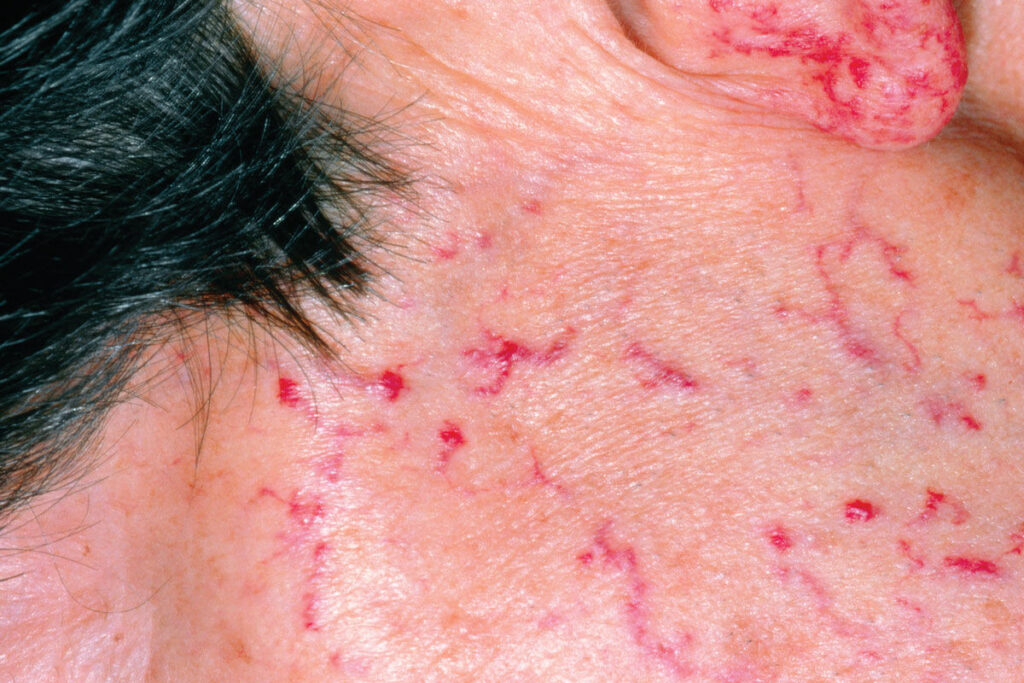What do these presentations involving a swollen bicep, patches of thickened skin and facial telangiectasia add up to? By Dr Keith Hopcroft
CASE EASY
The patient
A 50-year-old man with no past medical history and on no medication
He says
‘I felt something pop in my shoulder a couple of weeks ago and it was a bit sore. Some bruising came up but that’s gone now. It still aches a bit but when I bend my arm I can see a big lump – it’s like my muscle has suddenly grown.’
+

=
See end of article for answer
CASE MODERATE
The patient
A 48-year-old woman with a history of obesity and prediabetes, on metformin 500mg bd.
She says
‘I’ve got these marks on my neck that have been there for months. They don’t itch or really bother me but they make it look like I’m dirty. I have similar marks in my armpits, too. I thought it might be an allergy to perfume but nothing I do gets rid of it.’
+

=
See end of article for answer
CASE HARD
The patient
A 50-year-old woman who rarely attends with a past history of recurrent mild iron deficiency and epistaxis, who is on no medication.
She says
‘I’ve had these red marks for as long as I can remember, but they’re getting worse. They started around my lips but they’re now on my face, neck and tongue. They don’t hurt but I don’t like the way they look. Is there anything I can do?’
+

=
See end of article for answer
Dr Keith Hopcroft is Pulse’s medical adviser and a GP in Basildon, Essex
Answers
EASY Rupture of the long head of biceps The history is typical. Active flexion of the elbow post-injury reveals a pronounced lump in the biceps area – caused by the unopposed contraction of the muscles, also known as ‘Popeye sign’. Despite the dramatic appearance, functional impairment may be minimal, so no treatment may be needed. If there is marked disability, surgery should be considered.
MODERATE Acanthosis nigricans This is darkened, thickened skin, often with a velvety appearance and sometimes with skin tags, in flexures. It has a strong link with insulin resistance and may be seen in obesity, diabetes and PCOS. It can result from malignancy or a side-effect of medication. It is more common in people with black or brown skin. Treatment is management of the underlying condition and cosmetic camouflage.
HARD Hereditary haemorrhagic telangiectasia (Osler-Weber-Rendu syndrome) This is a rare autosomal dominant disease causing multiple small telangiectasia, especially on the lip and tongue, which spreads with age. The most common presentation is recurrent epistaxis, but it can also cause GI haemorrhage. Refer to secondary care, depending on the issue the disease is causing.
Please note – these are all fictional cases and not based on any real patient interactions
















